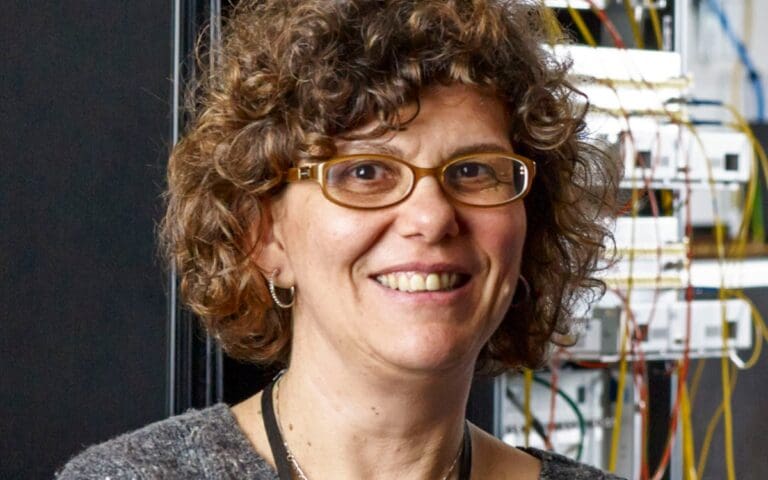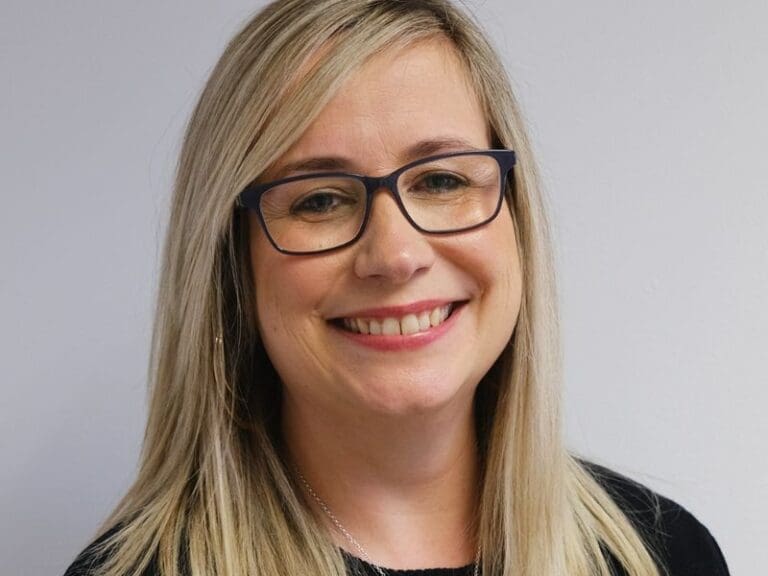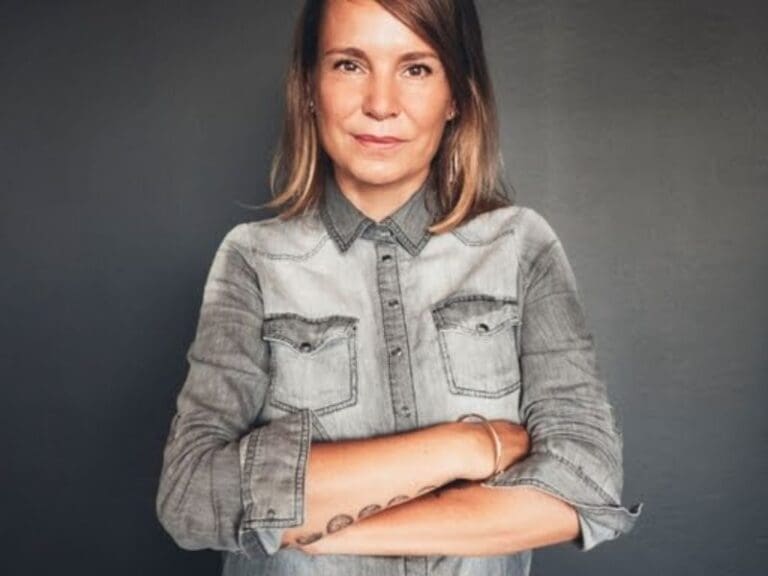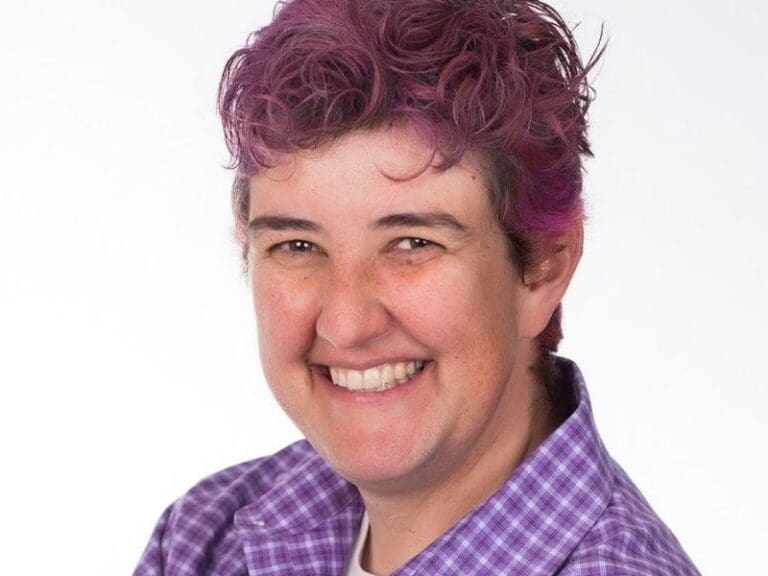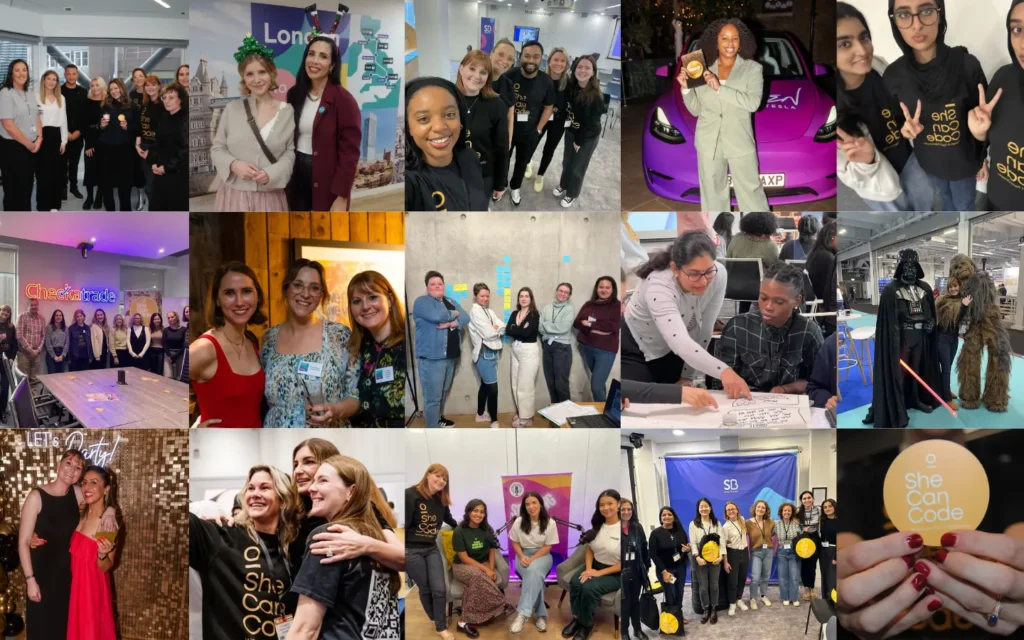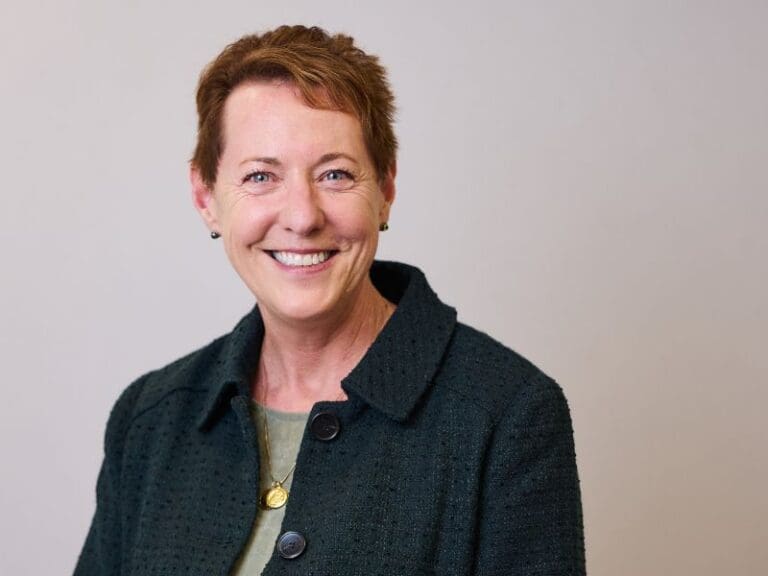Dimitra Simeonidou is UKTIN Lead for UK Research Capability, and Director of the Smart Internet Lab and Co-Director of Bristol Digital Futures Institute, University of Bristol.
Dimitra has been working in the telecoms sector for over 30 years, with her research focusing on the fields of high performance networks, programmable networks, wireless-optical convergence and smart city infrastructures.
As Director of the Smart Internet Lab – one of the most prominent research labs in Europe – she is responsible for designing the next generation of network architectures enabling mobile communications, cloud services and global internet connectivity. Additionally, as Co-Director of Bristol Digital Futures Institute, her research is transforming the way we create new digital technologies for inclusive, prosperous and sustainable societies, driving social-technical innovation for a better digital future.
Dimitra is currently representing the University of Bristol as part of the UK Telecoms Innovation Network (UKTIN) to help accelerate the UK telecoms R&D ecosystem, and support research translation and commercialisation to scale up telecoms innovation.
Professor Simeonidou’s current research focuses on high performance networks, programmable networks, wireless-optical convergence, and smart city infrastructures. Dimitra has been the Technical Architect, and the CTO of the smart city project Bristol Is Open. She is currently leading Bristol’s 5G urban pilots and 6G national experimentation platform, JOINER. She is the author and co-author of over four hundred publications, numerous patents, and several major contributions to standards. She has been co-founder of two spin-out companies, the latest being the University of Bristol VC funded spin-out Zeetta Networks, delivering SDN solutions for enterprise networks. Dimitra is a Royal Society Wolfson scholar.
How did you land your current role? Was it planned?
This was definitely not planned – I do not think, at any stage of my life, I sat down and planned my career.
However, I have always been driven by my interests and curiosity – and I developed a passion for STEM subjects at an early age, so there has been a guiding principle.
I started off by studying physics. It was not until I got to higher education that I developed an interest in the field of telecommunications and then started to push what can be done, which led me to where I am today.
What are the key roles in your field of work, and why did you choose your current expertise?
Engineering is arguably one of the most important roles in any sector. But in telecoms, engineers are genuine innovators who have a huge impact that drives visible transformation in our everyday lives, connecting people and businesses on a global scale.
JOINER is a great example – we are the UK’s first national accelerator programme towards 6G and beyond. It is a national R&D platform interconnecting academic institutes, research labs and industrial partners to enable innovation within a collaborative experimental environment. We are shaping what people will understand when it comes to the possibilities of mobile communications.
Did you (or do you) have a role model in tech or business in general?
My love for STEM and belief that it can change the world actually started at an early age when I first read the biography of Marie Curie. It was her story that inspired me to pursue a career in academic research and become a university professor – and led me to the realisation that a career as a woman in STEM is both possible and rewarding.
I have had many interesting discussions with women about finding someone to model or follow. It is such a critical part of personal growth – I strongly believe that anyone looking to pursue a career across science, tech, engineering, and maths should have a mentor or role model to which they can aspire.
What are you most proud of in your career, so far?
I worked on the design of the first optical transatlantic submarine network (TAT12), connecting the UK with the US and forming the backbone of what we call the global internet today. That was a huge achievement, alongside my work on a second system called SEAMEWE3 – the longest optical submarine telecommunications cable in the world, linking South-East Asia, Middle East, and Western Europe.
Then there are the PhD students I have mentored. It has been incredibly fulfilling to nurture these young peoples’ passion, watch them complete their research and go on to hold key positions in businesses and academia, contributing to the international technical community. This has then fed back to me a desire to push forward with projects like Joiner, so hopefully, there will be more milestones to come!
What does an average workday look like for you?
I do not have average days because I have the privilege of going to work every single day and imagining what the future will look like. I get to explore technology, innovation, energy consumption and the environment, inclusiveness and social fairness, security, privacy and trust and anything else I feel may be relevant.
The responsibility of such autonomy is delivering strategic research direction and thought leadership to over three hundred academics and researchers, mentoring colleagues, and communicating to partners – Joiner alone spans eleven research universities.
My remit spans national and international communication, multiple plenary and keynote talks to promote our research and report outcomes, advising government and regulators, reporting to our research funders, and supporting impact generation.
Entering the world of work can be daunting. Do you have any words of advice for anyone feeling overwhelmed?
Be prepared to play the long game – a career in academia is not easy. It requires hard work and great commitment over a prolonged period of time. This is a significant challenge that many young academics face, and one I quickly learnt at the onset of my career.
I would encourage anyone considering this path to always look at long term career aspirations instead of expecting instant return or immediate success. Most research proposals, for example, have less than a ten percent success rate for being funded – but do not let that deter you! Develop a wide range of interests to draw upon.
Also, it is now easier than ever to connect to people with similar interests – develop a strong network of like-minded individuals and be intentional about nurturing those relationships. Remain positive, celebrate the small wins along the way, and the outcome will be extremely rewarding.


